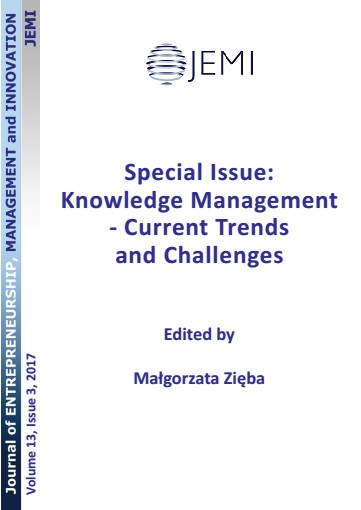Creating Intangible Value through a Corporate Employee Portal
Creating Intangible Value through a Corporate Employee Portal
Author(s): David Mendes, Jorge Gomes, Mário RomãoSubject(s): Social Philosophy, Sociology, Socio-Economic Research
Published by: Fundacja Upowszechniająca Wiedzę i Naukę "Cognitione"
Keywords: intranet; employee portal; business value; knowledge management; strategy maps; benefits management; change management; corporate culture
Summary/Abstract: Organizations create competitive advantage by creating more economic value than their rivals. Increasing business competition and information technology development have both led to huge corporate organizational changes and have raised the importance of intangible assets along the value chain. Value creation and the success of organizations increasingly depends on the leverage of knowledge available internally, as nowadays it has become essential to understand employee portals’ business value and to build adequate change management programmes. The Balanced Scorecard (BSC) and Strategy Map (SM) show an organization’s objectives, how they are achieved, and the link between the goals of the various sub-units and how these act together to produce the overall results. BSC and SM clarify how intangible assets are aligned with strategy, to create value for the organization. However, the concerns related to change management seem not to have been properly addressed. To conveniently deal with these matters, the authors propose a framework to map the cause-effect relationships that generates business value, as well as provides top management and decision makers with the information needed for a suitable top-down commitment and sponsorship, which is essential to bring about the appropriate change management and benefits’ realization. SM and Benefits Dependency Network (BDN) were combined, resulting in a suitable framework to help organizations enhance their knowledge, mitigating the risk of investment failure or misuse, and a timely contribution to capture more value from investments in intangible assets. The developed framework helps organizations address their concerns related to value creation and change management, and it has been applied to this Employee Portal case study. This case study allows us to conclude that, although the promotion of organizational culture and corporate alignment are not usually frequent goals of organizations, and do not motivate investments in the development of employee portals, they are generally recognised as being essential tools for decision-making and value creation.
Journal: Journal of Entrepreneurship, Management and Innovation
- Issue Year: 13/2017
- Issue No: 3
- Page Range: 125-150
- Page Count: 26
- Language: English

